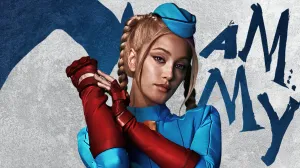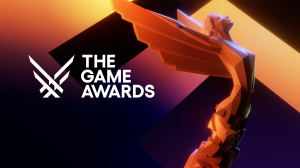Titmouse founder Chris Prynoski believes that Dungeons & Dragons and other roleplaying games can play an important role in fostering creativity for budding artists and those looking to enter any creative field. The founder and president of the animation studio behind hits like The Legend of Vox Machina and Star Trek: Lower Decks credited his lifelong love of tabletop gaming for helping to push his creative side during a critical period in his artistic development. Speaking with ComicBook.com’s The Character Sheet YouTube channel earlier this year, Prynoski spoke about how playing Dungeons & Dragons as a youth helped him improve as an artist. “I was already into drawing, but it definitely was a useful skill to have in playing D&D,” Prynoski told host Christian Hoffer. “But I think even more so than the technical drawing side, it pushed the creative thinking side and the storytelling and the improvisation and all that stuff. Like most tables, certainly back then, and I think now, you’re trying to make your friends laugh while playing the game. So, it definitely pushes you develop some more, even if it’s unintentional improvisational comedy skills, to say it in a way Liam Neeson says it.”
Videos by ComicBook.com
Prynoski has certainly used the skills he developed around the RPG table in his professional career. In addition to creating hits based on RPG games like The Legend of Vox Machina, Titmouse’s work includes a number of series where understanding comedy beats and timing were crucial to success, such as The Venture Bros., Big Mouth, or Black Dynamite. Prynoski also noted that it seemed like tabletop RPGs were a commonality in the animation field. “The entertainment industry is relatively small compared to other fields, like I don’t know, dentists or something,” Prynoski said. “There’s a lot less people in the industry. And then the animation is even a way smaller subset of that. And I think just based upon the path that many people take to get into animation, there’s always been a high number of tabletop RPG people in animation. It’s almost a given that many of the people are familiar with it, if not are active players. It was kind of always there, it always existed, and it was always a touch point.”
However, Prynoski has noticed that the current surge of popularity with Dungeons & Dragons and other games has made more people in the field active RPG gamers as opposed to folks who played as a kid. He also noted that his love of D&D helped lay the foundation for his involvement in The Legend of Vox Machina, as cast members Sam Riegel, Travis Willingham, and Matt Mercer (all of whom worked with Prynoski on other animated projects) asked him if he was interested in developing an eventual Critical Role animated project specifically because they knew he was a ‘D&D guy.’
The Legend of Vox Machina, Prynoski mentioned, was also an extra challenging project in part because of the passion that revolved around the project. “[The Legend of Vox Machina] was extra challenging because not only there’s adapting a work, but there’s adapting work that’s currently beloved by a gigantic fan base,” Prynoski said. “There are projects where it’s an old thing that nobody cares about and rebooting it, and there’s a little bit less risk in that, or it’s a thing that hasn’t come out. We’ve done a lot of jobs where it’s like, “Take this movie that is in production and you guys are going to do the TV series,” but it doesn’t have a fan base yet, so there’s no risk. But with Vox specifically, they had done that intro where they had in live action portrayed their own character, and all the fan art. So we needed to do a specific version that is the amalgamation of the essence of these characters, but doesn’t rely too heavily on any of the fan art.” Ironically, all of that fan art could be the work of a future Chris Prynoski, given how that fan art often is the early work of a future animator or creative designer.
When asked if he had any advice for those with aspirations in animation, Prynoski mentioned to continuously work on their craft. “Draw all the time,” Prynoski said. “And if you don’t have that drive to draw all the time or if you get bored of drawing, really think about how do you want to do this. It’s like there’s being in professional sports…Like, if you want to be a basketball player and you don’t want to play basketball all day long, maybe it’s not for you. If you want to be an animation artist and you don’t want to draw all day long, maybe it’s not for you. So, find out, draw all the time and then you’ll get better if you draw all the time. It totally is a skill that you can learn. There are people who have a kind of natural talent, but that needs to be cultivated. I find it’s much more likely that if you have the desire and the drive and put in the work, that you’ll become the best artist versus someone who could draw really well when they were a kid and doesn’t put in that work. So just draw a lot, draw a lot. That’s it.”
The full interview, which includes Prynoski using the RPG character creation process to inform his drawing of an original character, can be found in the YouTube video up above.








